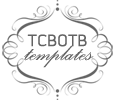Picture this:
You peek into a fifth grade math classroom to observe a teacher. The teacher is positioned at the front of the classroom instructing students on a math topic. The students are at their desks (in rows facing the teacher) quickly taking notes on the teacher's lecture. On Friday's in the classroom, the students know they will have a test on the material they are covering in class today. In this same classroom, the students complete the same series of activities on a daily basis: the teacher teaches from the book; the class reads from the book; the teacher completes examples from the book; the students complete problems in class from the book; and the students complete homework problems from the book.
If you are not already as bored as I am, then Guided Math isn't for you. I know there are many people out there that experienced this method of teaching as a child, myself included. Guided Math is the exact opposite of this. Guided Math is a method of math instruction that follows the same guiding principles of the Guided Reading model set forth by Fountas and Pinnell. I first came to this thought because of my training in Fountas and Pinnell during my student teaching. When I got my fifth grade job, I started off the year by teaching the same way as I mentioned above (scary, I know!). I soon became bored and realized my students must be bored if I am bored. I started to think, "Why can't we do the same form of instruction as we do in Guided Reading, but just do it with math?" I then began looking into Guided Math and Math Workshop.
In my research, I stumbled across the book pictured below.
This book truly helped me grasp the overlying concept of Guided Math. Guided Math is all about the combination of whole group instruction, small-group instruction, and math workshop.
Stay tuned for Guided Math Part Two, where I will breakdown my organization of Guided Math for my math instruction.



No comments:
Post a Comment